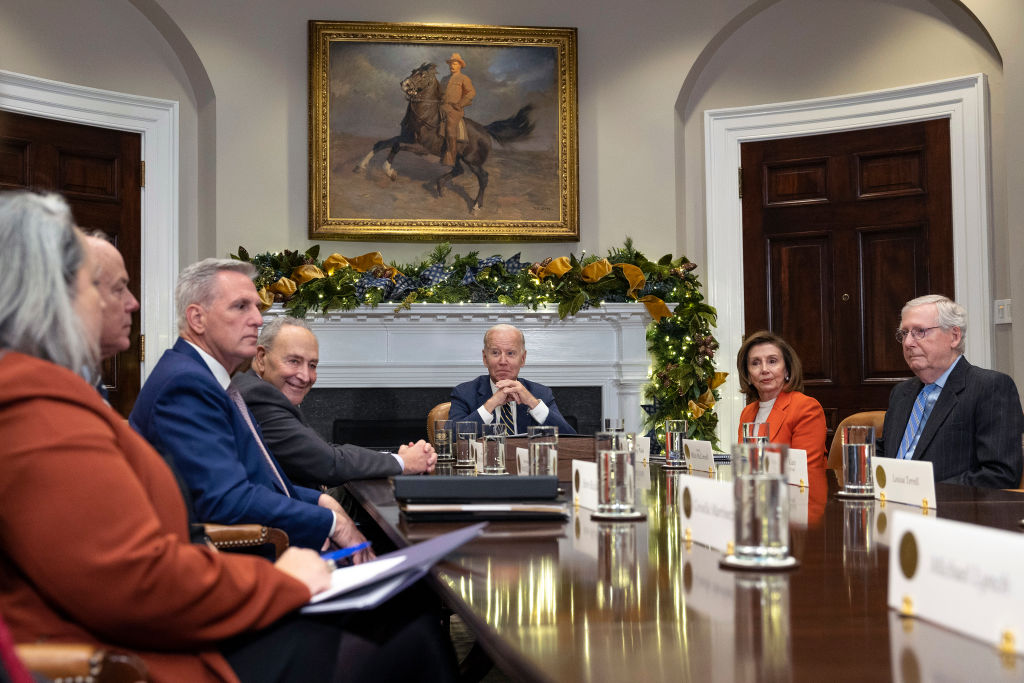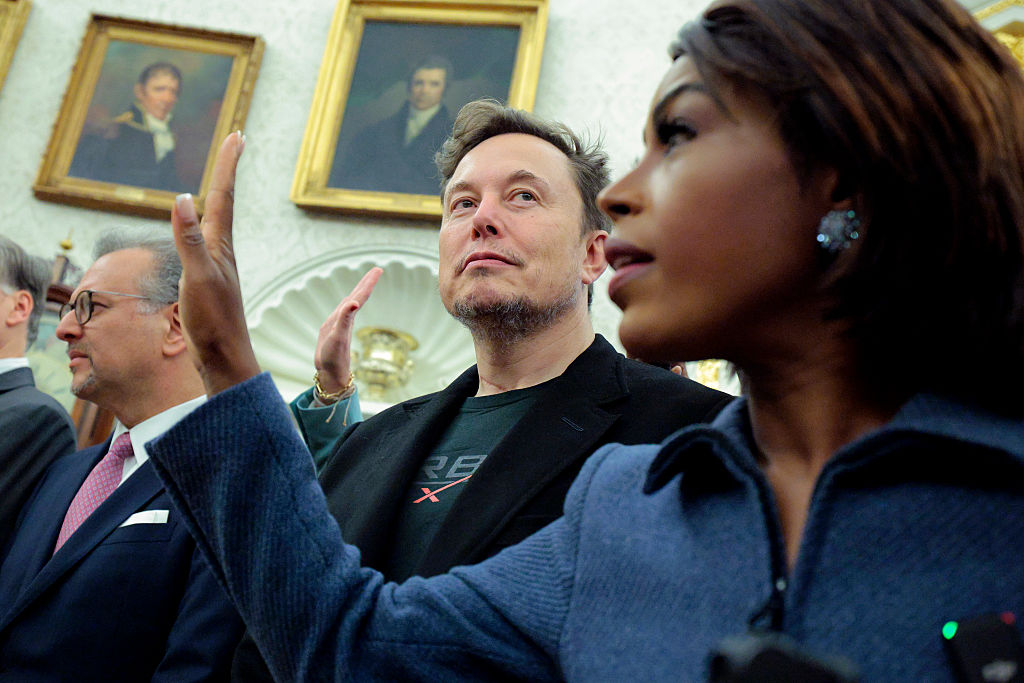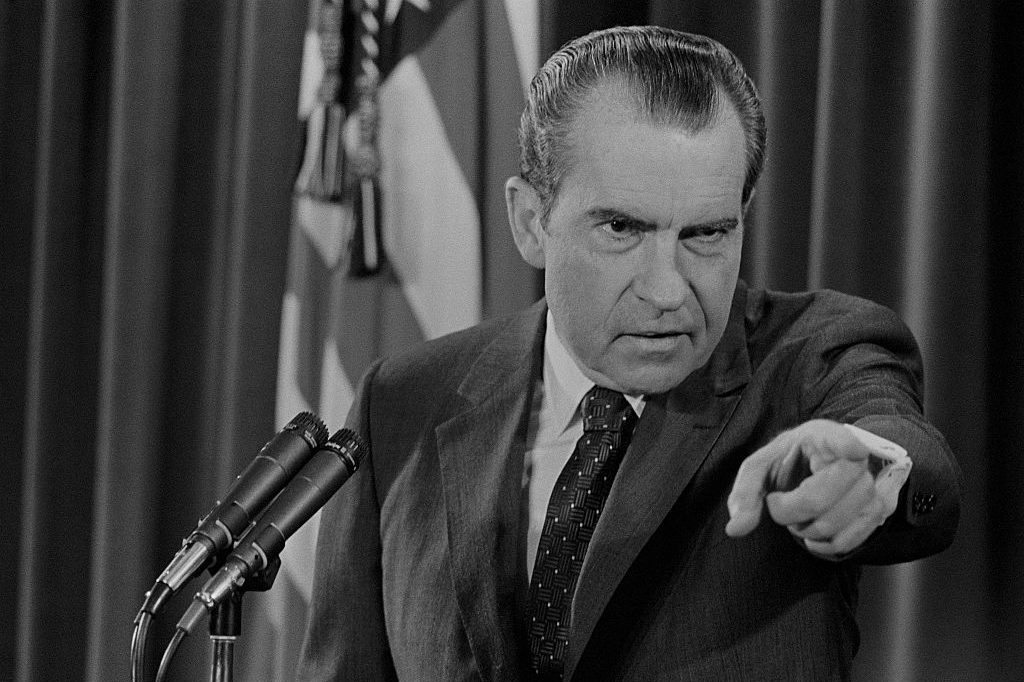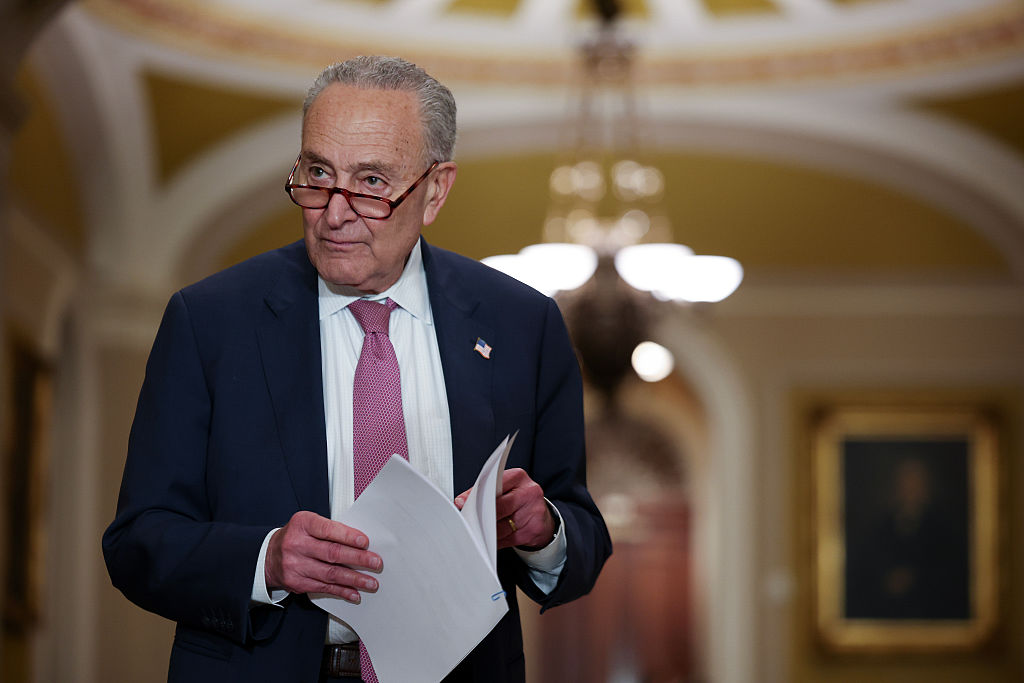Earlier in the week, Speaker of the House Kevin McCarthy gave an evening address about the urgency of raising the debt ceiling and cutting federal spending. Technically, the government has already taken on the amount of debt it’s allowed to carry. The Treasury Department is employing “extraordinary measures” to shuffle money around to service the national debt and make government payrolls.
But these measures can’t keep the government afloat forever. Hence the need to raise the debt ceiling or risk catastrophic default some time in the summer.
The timing of the speech — one day before President Biden’s third State of the Union address — was conspicuous. It came a week after McCarthy and Biden had a closed-door meeting in the White House to lay the groundwork for raising the debt ceiling.
Both the president and the speaker say they intend to work together to avoid a historic default, but despite the pressing financial situation both have been light on specifics about how House Republicans will work with Senate Democrats to broker a deal to raise the debt limit and avoid default.
McCarthy’s speech probably could have been written by an intern playing fiscal jargon bingo at Bullfeathers. He tried to keep it simple, framing the issue as if he were the responsible parent giving a teenager life lessons on personal finance — and not one of the politicians complicit in perpetuating the status quo.
McCarthy lectured Americans about the scale of the nation’s coming interest payments on its debt, blamed the Democrats for runaway spending (as if Republicans haven’t run up the national AmEx on their own favored policy areas), and most importantly tried to occupy the high ground as the adult in the room.
This posturing is key. McCarthy needs to look as mature as possible for as long as possible, because sooner or later he’s going to have to answer to his fractious caucus.
One of the policy issues that undergirded the historic floor fight for the speaker’s gavel last month was government spending. The unruly debates and entrenched infighting that we saw back in January are likely to pale in comparison to what we’ll see when it’s time to raise the ceiling.
To secure the speakership, McCarthy gave critical posts on the House Rules Committee to fiscal hawks like Representative Thomas Massie (who has recently taken to wearing a pin that shows a real-time national debt ticker) and Representative Chip Roy. Any legislation, including a bill to raise the debt ceiling, must be approved by the Rules Committee before it gets a vote on the House floor. These fiscal hawks have made it clear they will insist that spending cuts accompany an increase to the debt limit.
President Biden has made clear that he will not entertain cuts on entitlement spending.
Democrats generally enjoy better footing on the debt ceiling because they don’t worry about the debt’s impact on the economy the way Republicans do. But before making his pilgrimage to 1600 Pennsylvania Avenue, McCarthy put the word out that he wouldn’t touch Social Security or Medicare. That’s enough for Biden and Schumer to secure a nominal “win” on these negotiations.
Which raises the question: if not from entitlements, where will the cuts come from? Remember that when Congress talks about spending, it is only talking about discretionary spending, which is a paltry 30 percent of the federal budget. Mandatory spending — which Congress has basically put on autopilot — represents 63 percent of the budget. The rest is interest payments.
Regardless, it won’t be a quick and easy vote in the House. McCarthy has only a four-seat majority to pass spending cuts on a party-line vote.
Then there’s the Senate, which is free to amend or reject a House bill. The back-and-forth will eat up a lot of valuable time and encourage leadership to start pointing fingers. But then that’s standard operating procedure by now.
No one can say they didn’t see this one coming. Democrats looked ready to raise the debt ceiling during the lame duck session after the midterm elections. But with a packed docket, a tight deadline, and the Christmas holiday looming, they decided that raising the debt ceiling need to be bipartisan. Either way, Democrats win.
Had they raised the limit during lame duck, President Biden would have a clear pathway to fund his agenda into the run-up to the 2024 presidential election. Letting it linger means they get to watch McCarthy walk a tightrope between trying to appear like a statesman and herding the cats that make up his caucus. Remember this the next time Democrats accuse Republicans of playing chicken with the global economy. They could have worked through Christmas to avoid the shenanigans we’ll see this summer.

























